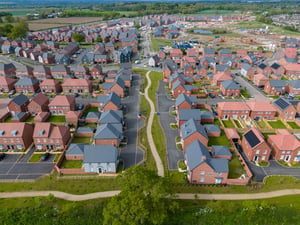As Biodiversity Net Gain (BNG) legislation enters a second year, housing developers are continuing to navigate the practicalities of long-term compliance.
As featured recently in Housing Today, Dr Andrew Swift, CEO of Fera Science Ltd., reflects on the ongoing confusion and ambiguity around BNG, outlining how scientific solutions can support developers in confident delivery.
What does BNG mean for Housing Developers?
BNG is a mandatory planning obligation which requires housing developers in England to leave biodiversity in a measurably improved state compared to pre-development.
The legislation requires that developments demonstrate at least a 10% net gain in biodiversity, which must be maintained for a minimum of 30 years.
Challenges with Meeting BNG Requirements
Dr Swift outlines the most prominent challenges associated with BNG facing the housing development industry:
- The accuracy of BNG measurement
Developers often struggle with how to accurately measure biodiversity gains, before, during and after a housing project. Without a clear assessment, housing developers run the risk of failing to meet legislative requirements or reflecting true environmental improvements.
- The ability to track progress over a 30-year period
Developers must ensure biodiversity improvements are maintained for at least 30 years, however many have not yet accounted for long-term planning or monitoring responsibilities.
Housing developers have largely dived into BNG implementation without a scientific consideration or a clear, long-term strategy for compliance.
Those who plan for long-term compliance are better suited to meeting obligations efficiently.
- The costs associated with implementing and maintaining these changes.
Cost is a critical barrier, particularly for small to mid-size developers lacking internal ecological expertise, as BNG can require investment in ecological surveys, habitat creation and site maintenance long-term.
The perceived 30-year cost burden of maintaining BNG improvements is another major industry concern. However, a strategic approach could help minimise the financial impact.
A Science-led Approach to BNG Measurement
To effectively deliver and measure BNG, Dr Swift encourages developers to adopt science-based methodologies and seek expert advice.
This is particularly vital for companies without in-house ecological expertise.
“Working closely with an ecologist can help developers create a bespoke biodiversity for each site, which can be feasibly implemented using a range of habitat creation strategies,” he says.
“Rather than applying a one-size-fits-all approach, an ecologist can design a plan that’s practical, realistic and aligned with regulatory requirements – reducing the risk of delays or non-compliance.”
Dr Swift also advocates for the use of robust assessment tools and resources that allow developers to establish a quantifiable biodiversity baseline. Fera have developed their LAND360 tool which supports this data driven approach.
This data-driven approach is essential for:
- Measuring biodiversity losses and gains objectively
- Identifying priority areas for on-site and off-site interventions
- Demonstrating compliance with BNG regulations to planning authorities
He adds: “Incorporating scientific rigour and data insights helps developers to meet and maintain BNG requirements with confidence.”
Tackling the 30-Year Commitment to Maintain BNG
One of the greatest barriers facing developers in the context of BNG is the requirement to maintain biodiversity gains for at least three decades.
Acknowledging this concern, Dr Swift calls for innovative solutions which not only meet, but also exceed biodiversity gains into the future.
“Developers should consider a strategic approach to cost management to help minimise the financial burden of maintaining 10% improvement, while ensuring compliance with legislation,” he says.
Dr Swift highlights the importance of early financial planning and long-term thinking, suggesting that developers who integrate BNG considerations from the outset will be better positioned to manage costs efficiently and meet statutory obligations without risking future enforcement issues.
“A particularly promising development in this area is the rise of new financial models that enable investment in biodiversity through market-based approaches,” he explains.
“Emerging solutions, such as Nature Shares, treat biodiversity and ecosystem services as tradable assets – shifting financial responsibility away from public funding and unlocking alternative investment opportunities.
“By incorporating private capital and attracting a broader pool of investors, these models help spread the cost burden, supporting a more resilient framework for BNG delivery.”
BNG Towards Business Advantage
Dr Swift encourages developers to view BNG legislation not just as a compliance requirement, but as a strategic tool for business advantage.
“By leveraging robust resources and expert guidance, developers can strengthen their sustainability credentials, streamline planning approvals, and build stronger relationships with communities and local authorities,” he says.
At Fera, we understand the unique challenges facing housing developers and the importance of science in helping house builders meet sustainability, BNG, and carbon reduction targets.
Our expert team specialise in designing, managing and evaluating BNG strategies using science-based solutions, such as our LAND360 service combining science and data.
We help ensure your projects not only meet regulatory requirements but also contribute meaningfully to broader sustainability goals.
For more information on how Fera could support your development opportunity, please get in touch with our team here.